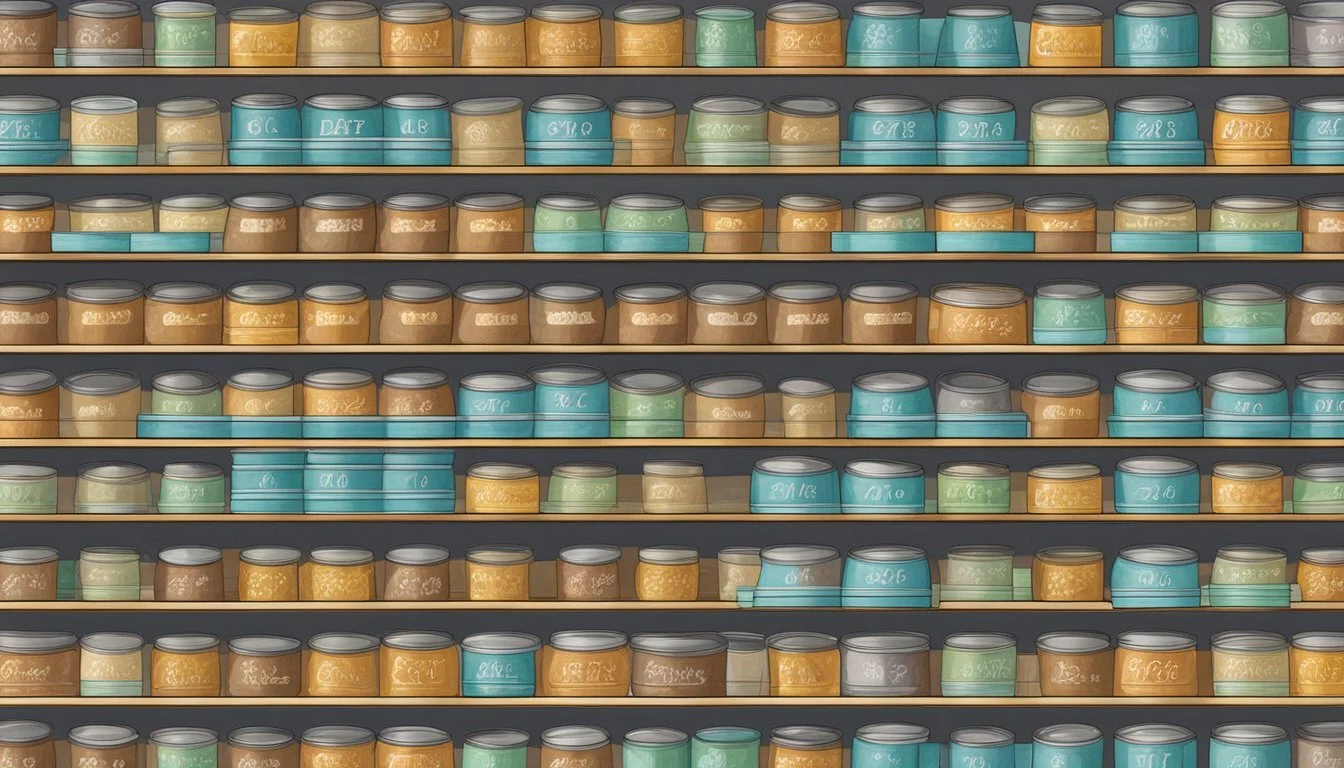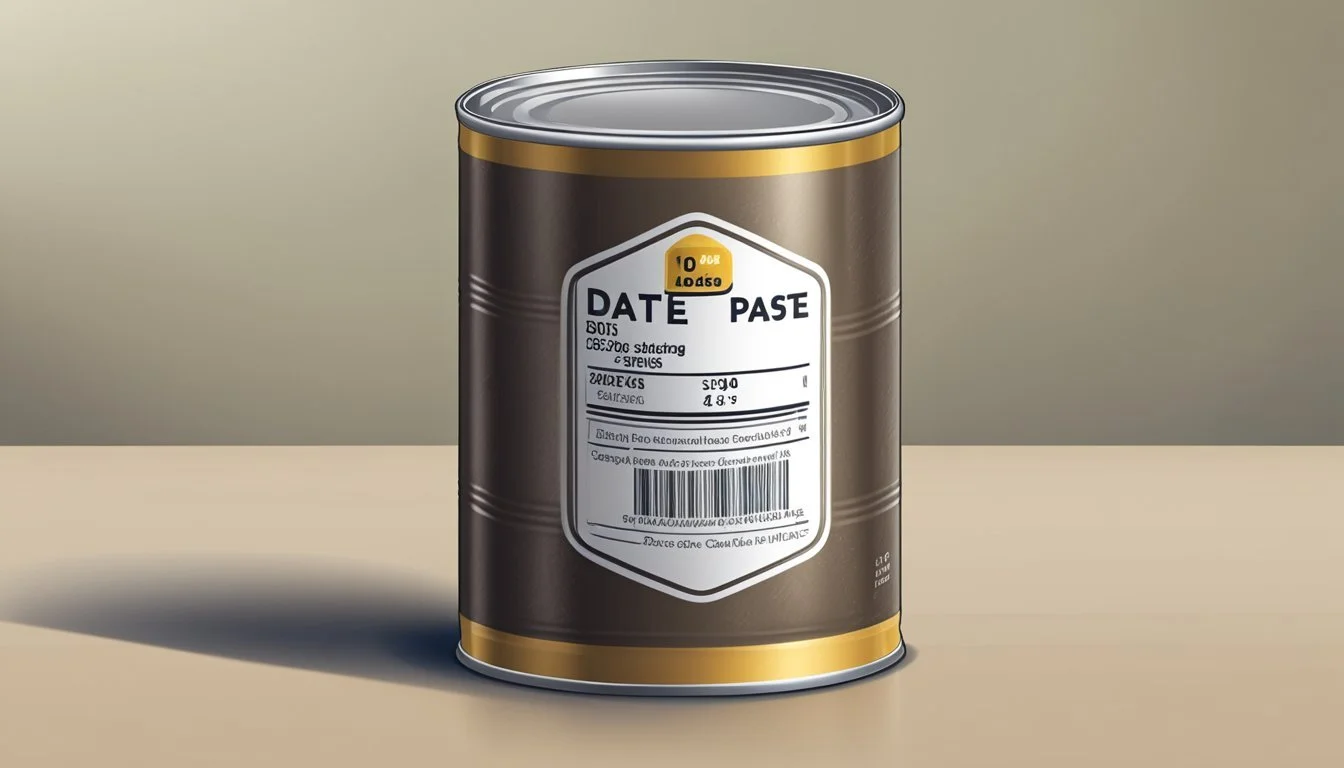How Long Does Canned Date Paste Last?
Shelf Life and Storage Tips
Canned date paste, a natural sweetener derived from condensed pureed dates, often Medjool due to their naturally sweet flavor, offers a shelf-stable and versatile alternative to refined sugars. Common in Middle Eastern cuisine, its uses range from sweetening baked goods to enhancing the flavors of savory dishes. Consumers appreciate date paste for its nutritional profile, offering essential nutrients and fiber while serving as a convenient option for those looking to incorporate healthier sweeteners into their diet.
Under optimal storage conditions, an unopened can of date paste maintains its best quality for about 18 to 24 months at room temperature. This longevity is due to the sterilization process canned goods undergo, effectively removing bacteria and sealing the product in an airtight environment. As with many canned products, while the 'best by' date is indicative of the date paste’s peak quality, the real shelf life can extend beyond this period provided the can remains undamaged and stored away from extreme temperature fluctuations.
Once opened, however, the date paste's longevity changes significantly. To preserve its freshness and prevent spoilage, opened date paste should be refrigerated and ideally used within a week. If longer preservation is needed, freezing the paste can help extend its usability, although this might slightly alter its texture. Through these methods, consumers can ensure that the natural sweetness and nutritional benefits of date paste are available whenever they need them.
Understanding Canned Date Paste
Canned date paste serves as a convenient, shelf-stable natural sweetener, offering both sweet flavor and nutritional benefits, such as fiber. It can be used with a variety of foods, ranging from oatmeal to smoothies.
Definition and Uses
Definition: Date paste is made from pureed dates and may be regarded as a healthier sweetener alternative due to its fiber content and nutritional profile. It retains the sweetness of whole dates while being versatile enough for incorporation into various recipes.
Uses:
Oatmeal: Date paste can be mixed into oatmeal for a natural sweetness.
Smoothies: It is used to sweeten smoothies without adding refined sugars.
Salad Dressings: The paste can act as an emulsifying agent and sweetener in salad dressings.
Toast: As a spread, date paste offers a plant-based alternative to traditional jams and sweeteners.
Date paste is prized in plant-based diets for its natural sweetness and nutritional value, including its fiber content, making it a wholesome choice for a wide array of culinary applications.
Shelf Life Basics
Understanding the shelf life of canned date paste is essential to ensuring freshness and quality. The date of manufacture and the product's storage conditions play critical roles in determining its longevity.
Unopened Shelf Life
Canned date paste typically has a long shelf life due to the sterilization process during canning. When unopened and stored in a cool, dry place, the product can last well beyond its labeled expiration date or best-by date. In general, unopened canned date paste may retain its optimal quality for about 18 to 24 months from production, though safe consumption is often possible past that timeframe if the can's integrity is uncompromised.
Shelf Life After Opening
Once opened, the shelf life of canned date paste reduces significantly due to air exposure and potential contaminants. To maintain freshness and quality, one should transfer the remaining product to an airtight container and store it in the refrigerator. Under these storage conditions, opened canned date paste can usually last for up to two weeks, ensuring its quality and safety for subsequent uses.
Storage Recommendations
When it comes to preserving the freshness and extending the usability of canned date paste, understanding proper storage conditions is crucial. Implementing the right methods can significantly prolong its shelf life, ensuring the date paste remains safe and flavorful for future use.
Proper Storage Conditions
Date paste should be stored in a cool, dry place such as a pantry or cupboard before opening. Once the can is opened, the remaining paste must be transferred to an airtight container to prevent spoilage and maintain quality. Refrigeration is necessary to prolong the shelf life of the opened product.
Pantry (unopened): Store in a cool, dry place away from direct sunlight.
Fridge (opened): Transfer to an airtight container and keep refrigerated.
Extending Shelf Life
To extend the shelf life of date paste beyond refrigeration, freezing is an effective option. Date paste can be portioned and frozen, providing convenient usage sizes for future recipes.
Freezing: Spoon the paste into dollops on a parchment-lined baking sheet. Freeze until solid and then store in a resealable plastic bag or container.
Storage Method Condition Shelf Life Pantry Cool, dry place Until expiration date Fridge Airtight container Up to 1 month Freezer Dollops or airtight Up to 6 months
Following these specific storage methods will help maintain the quality and safety of date paste.
Identifying Spoilage
Proper storage of canned date paste is crucial to prevent spoilage. When identifying spoilage, one should look for visual and textural changes as well as olfactory indicators which can signal that the product is no longer safe to consume.
Visual and Textural Signs
Mold: The presence of mold, which can appear as fuzzy spots in various colors, is a definitive sign of spoilage.
Discoloration: Any significant changes in color from the original date paste may indicate spoilage.
Changes in Texture: Date paste should have a consistent smoothness. If it exhibits a separated or curdled texture, this could signify spoilage.
Olfactory Indicators
Smell: Fresh date paste should have a sweet, mildly fruity smell. An off odor or sour aroma is an indicator of spoilage.
Off Odor: Any unpleasant or strange smell emanating from the date paste suggests it is no longer suitable for consumption.
Using Canned Date Paste in Cooking
Canned date paste adds natural sweetness and a rich texture to various dishes while preserving the quality. The versatile use of this ingredient in cooking runs from sweets to savory recipes, enhancing both flavor and consistency.
Incorporating into Recipes
Canned date paste can be seamlessly incorporated into numerous recipes. It offers a concentrated flavor that is desirable in baking, providing a healthier alternative to refined sugars. Chefs commonly use it in sauces to add depth and subtle sweetness without overpowering the dish’s main flavors. Date paste works exceptionally well in:
Baked goods such as cookies, cakes, and bread
Savory stews and sauces, balancing the flavors
Sweet pizzas as a base layer or topping
Salad dressings as a thickening agent and sweetener
When substituting for sugar in baking, one can use a 1:1 ratio, retaining the moisture and adding a caramel-like note.
Flavor and Consistency
The quality of canned date paste influences both the flavor and consistency of the dish. Its thick consistency aids in:
Binding ingredients in recipes such as meatballs or granola bars
Thickening sauces and soups without altering the desired end-texture
Date paste's flavor is rich and sweet, yet not overwhelming, allowing it to blend well with other ingredients without dominating the taste profile. It contributes to creating a balanced depth in dishes that require a hint of sweetness paired with robust savory elements.
Safety and Quality Considerations
When considering the longevity of canned date paste, it is crucial to distinguish between safety and quality. The date paste's preservation method and the integrity of its packaging are key to its shelf life, while proper storage is imperative to mitigate health risks.
Preservation and Packaging
Canned date paste typically undergoes a heat sterilization process that destroys microorganisms capable of spoilage or causing foodborne illnesses. Once sealed, the absence of air inhibits the growth of aerobic bacteria, yeasts, and molds. Packaging materials play a pivotal role in quality and safety. Cans and glass jars are commonly used, each providing a robust barrier against environmental contaminants and preserving freshness.
Cans: Often lined to prevent corrosion; should be free from dents, rust, or swelling.
Glass jars: Must have airtight seals; vulnerability to breakage is a consideration for safe handling.
Health Risks
Adherence to safety protocols during the canning process minimizes health risks. However, the consumer should inspect canned goods before consumption.
Signs of Potential Risk:
Swollen or Leaking Cans/Jars: Indicate potential bacterial contamination.
Damaged Seals: Compromise the sterility of the product.
Mold Growth: A visible sign that the product is not safe for consumption.
Off Odors: Suggest chemical or bacterial spoilage.
The longevity of the date paste's quality—its peak freshness and taste—relies on proper storage conditions and the absence of preservatives that may affect its shelf life. Users should be aware that while canned goods may remain safe to eat beyond 'best by' dates, optimal quality is generally upheld when consumed in a timely manner.
Practical Tips for Home Cooks
When managing pantry staples like date paste, home cooks seek to maintain the best quality while minimizing waste. Careful storage and clear labeling are key strategies to extend the paste's usability and track its freshness.
Maximizing Date Paste Use
Storage: It is essential to store date paste in an airtight container or resealable plastic bag to prevent it from drying out. For longer-term storage, home cooks might opt for freezing in portion sizes—this not only preserves the paste but also makes it convenient to use only what's needed, reducing waste.
Environment: Keeping date paste in a cool, dark place such as a pantry or refrigerator helps maintain its quality. Home cooks who prefer convenience might want to use date paste in a tube for ease of use and storage.
Labeling and Tracking
Date Labels: Using labels and markers to note the packaging or purchase date is a good practice. A home cook should mark the date on the container of the paste right after opening or preparing it.
Expiration Tracking: A clear system to track the expiration date is crucial. They don't have to rely on memory as the label provides immediate information about the paste's age.
Usage Tags: For a more detailed approach, some may also choose to note down when the paste was last used as an indicator of its freshness.
By adopting these practices, home cooks can ensure that their date paste remains a convenient and high-quality ingredient for various recipes.








